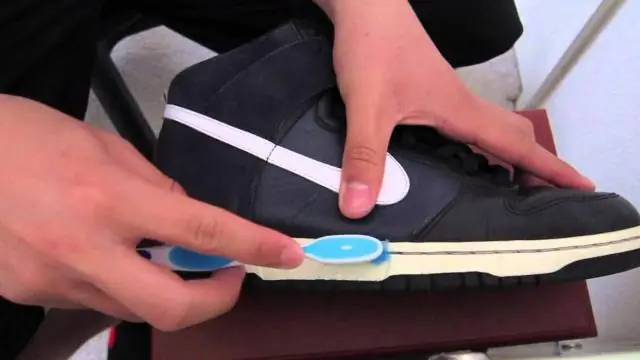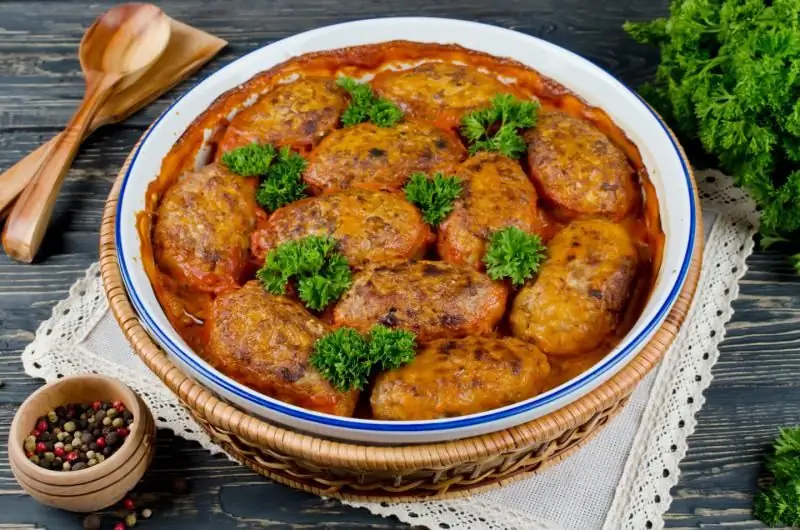
Table of contents:
- Diseases of cabbage and methods of dealing with them. Part 1
- Cabbage is a favorite vegetable
- The causative agents of peronosporosis, ways to combat it
- Causative agents of mosaic, methods of dealing with it
- Vascular bacteriosis
- How to avoid vascular bacteriosis
- Signs of mucous bacteriosis and the fight against it
- Author Bailey Albertson [email protected].
- Public 2023-12-17 12:53.
- Last modified 2025-01-23 12:41.
Diseases of cabbage and methods of dealing with them. Part 1

As you know, a summer day feeds winter. Vegetables are lovingly planted at your summer cottage, which you carefully look after, hoping to make supplies for the next year. But how often do you have to deal with spoiled leaves or root crops?
Cabbage is one of the most common vegetables in our latitudes, it can be found in every vegetable garden. And, unfortunately, she is susceptible to many diseases that can ruin the entire crop and nullify your efforts.
Let's consider each disease separately (after all, you should know the enemy by sight!), And study in detail the methods of dealing with them.
Content
- 1 Cabbage is a favorite vegetable
- 2 Causative agents of peronosporosis, ways to combat it
- 3 Causative agents of mosaic, methods of dealing with it
- 4 Vascular bacteriosis
- 5 How to avoid vascular bacteriosis
- 6 Signs of mucous bacteriosis and the fight against it
Cabbage is a favorite vegetable
Cabbage is distinguished into the cruciferous family precisely because of the shape of its flowers. Why is it so popular in our latitudes? Cabbage has no competitors among other plants in terms of the content of nutrients and vitamins. In the kitchen, she is an irreplaceable assistant: there are a great variety of cabbage dishes, they are varied, hearty, healthy and easy to prepare. Women love cabbage for its low calorie content and a positive effect on the body in general and appearance in particular.
This plant is unpretentious and does not require a lot of time and effort to take care of itself. However, not everything is as simple as it seems at the first time. Unfortunately, cabbage is very susceptible to certain types of diseases. Scientists explain this by the fact that cabbage is a two-year-old plant. That. The fact that cabbage is stored in storage facilities filled to the top can contribute to the spread of the disease.

Even in the early days, at the seedling stage, cabbage leaves can be affected by downy mildew and black leg. If you grow cabbage on heavy soils, you expose it to the danger of keel contamination. Without controlling the alternation of crops in the beds, you risk losing 2/3, or even up to 80% of the total harvest, not only of cabbage, but also of other cruciferous plants.
Even if you have grown a wonderful harvest of cabbage, avoiding disease and loss, it is early to relax. During winter storage, heads of cabbage can be affected by white and gray rot. Moreover, these diseases occur regardless of the zone in which the culture is cultivated and what kind of climate there is.
The causative agents of peronosporosis, ways to combat it
Peronosporosis is also called downy mildew. Its causative agent is a fungus that spreads very quickly during the storage period, if the heads of cabbage are in a damp room. Both seed cabbage and seedlings are affected.
To identify the disease, pay attention to the cotyledons: yellow spots appear on them, which eventually pass to the leaf plate. A white bloom appears on the underside of the leaf - the spores of the fungus that has begun to multiply. Leaves affected by peronosporosis dry out and fall off.

When you plant the seedlings outdoors, they will grow normally at first. But you can immediately notice reddish spots on the outer surface of the leaf, and a white coating of spores on the bottom. Mature heads of cabbage, sick with peronosporosis, when stored indoors, completely disappear.
Seed cabbage is covered with dark spots. Black formations appear on the stems, leaves, seeds and flowers, which, after the rains, become overgrown with a white coating. The seeds not only do not develop, but will subsequently become a source of infection both for the rest of the cabbage and for all vegetables of the cruciferous family: turnip, radish, radish, turnip.
To avoid this trouble, first of all give preference to cabbage varieties that are resistant to downy mildew. Do not forget that one hundred percent resistance does not exist, so you should regularly spray cabbage with Bordeaux liquid 1%. If you grow vegetables in a greenhouse or greenhouse, ventilate the area at all times.
Causative agents of mosaic, methods of dealing with it
A month after planting cabbage seedlings in the ground, you may notice yellowing of the veins on the leaves. This alarming symptom is an indicator that the cabbage is infected with mosaic, a viral infection that destroys cruciferous plants. This virus is especially susceptible to cauliflower, but it appears on other vegetable crops, albeit less often.
Some time later, the mosaic will affect the lower leaves, their large veins will be covered with dark green stripes.
As the veins stop growing from this, the leaves become wrinkled. Cabbage grows very slowly and no flowers are laid on the testes.

The most dangerous time for mosaic-affected cabbage comes when the air temperature is set within 16-18 degrees. Hotter temperatures and drier climates can suppress the virus and nullify it, but after the temperature drops again, the mosaic will return. At the same time, signs of the disease can be noticeable only on a small area of the leaf plate, although the plant is already completely infected.
To prevent the development of infection, during the entire growth period, carefully examine the leaves of not only cabbage, but also all cruciferous plants in your area. When the first symptoms of the disease are found, it is better to remove the affected plant, since the mosaic causes enormous harm to the vegetable crop, and this vegetable is unlikely to yield a crop.
To prevent the mosaic virus from getting inside the leaves, prevent the appearance of harmful leaf-eating insects and aphids in the cabbage garden. In addition, you need to take responsibility for the cleanliness of the beds: all cruciferous weeds must be removed as far as possible, that is, they must be destroyed not only between the rows, but also outside the garden.
Before planting seedlings in the ground, it is imperative to immediately reject and destroy the bushes, on the leaves of which signs of a mosaic appeared. If in past years there was an infection in your cabbage bed, it is worth choosing another place, and not planting plants in this land.
Vascular bacteriosis
During winter storage of cabbage, vascular bacteriosis practically does not threaten the heads of cabbage. But with the onset of the growing season, it is capable of causing irreparable damage to the entire cruciferous crop: radishes, turnips, radishes and rutabagas, and not just cabbage.
During hot and humid weather, bacteria begin to multiply especially actively due to rainwater. This is also facilitated by insect pests that disrupt the surface structure of plant parts.
Very often, the source of vascular bacteriosis infection of cabbage is located directly in the soil in which you plant the crop. These are the remains and seeds of last year's plants infected with this disease and growing on this piece of land last year.

To notice vascular bacteriosis in a timely manner, pay attention to the leaves for yellowing. Usually during the first year of cultivation, bacteria penetrate through the pores at the edges of the leaf blades. Over time, yellowness appears on the entire leaf, and a dark mesh covers the veins. On the cuttings, in the place of the cut, you can see that the vessels inside the plant are black.
The organisms that cause such bacteriosis are very mobile; they affect the entire plant completely, up to the stump. Therefore, infected heads of cabbage can no longer be used for seed breeding.
How to avoid vascular bacteriosis
In order to avoid vascular bacteriosis, choose cabbage varieties that are resistant to this disease. For 3 years, you should not grow carrots and parsley in the place where the cabbage grew. And cabbage seedlings are recommended to be planted in different places every year
Cabbage seeds are disinfected by placing them in water with a temperature of 50 degrees for 20 minutes. After that, they are cooled for 2-3 minutes in colder water. Phytoncides will become real helpers of seeds for disinfection. Take 25 g of garlic pulp and stir in half a glass of water. Put seeds in this mixture for an hour, and after a while, rinse and dry.

You can also select healthy seed by making cuts in the center of the leaf, along the vein. Darkening on the cut indicates infection, which means that the plant must be rejected. Treat seedlings with phytobacteriomycin before planting. To do this, lower the root system in a 0.1% suspension. Do not leave cabbage leaves and stumps in the garden after harvest, and do not send them to the compost pit. You better burn it.
Signs of mucous bacteriosis and the fight against it
Just like vascular bacteriosis, mucous is caused by bacteria, only of a slightly different type. Accordingly, his symptoms are also different.
Even at the stage of the formation of a cabbage head, mucous bacteriosis affects the places in which the petioles are attached to the stumps. First, the petioles on the base, closer to the soil, take on a dark color and become covered with mucus with an unpleasant odor. After that, the bacteria get over the entire head of cabbage, and the mucus leads to rotting over the entire surface.
You may not notice the infection if it is still at the initial stage, until you cut off the swing, which turns out to be infected. During storage, if the room has high humidity and temperature, the disease will begin to progress, especially if white or gray rot is seen in the storage. Here is what can contribute to the rapid development of mucous bacteriosis on cabbage during storage:
- impact during the growth of pests - insects, slugs;
- exposure to heavy frosts on heads of cabbage before harvesting;
- low level agricultural technology that inhibits the growth of heads of cabbage.
Mucous bacteriosis easily spreads to the fruits of turnip and turnip, making the testes unusable, which stop growing and rot. From the inside, the stalk becomes a porridge with an unpleasant odor, in which harmful bacteria continue to develop.

That is why, after harvesting, all plant residues should be removed from the soil.
In order for the slimy bacteriosis not to spoil the joy of the harvest, take care of following some rules in advance. Too large dosages of nitrogen mineral fertilizers are harmful to the plant. Do not miss the harvesting period so that they are not damaged by sudden severe frosts. Remember that the absence of external damage allows the heads of cabbage to be stored for a long time, even in not the best conditions. Stop the spread of cabbage flies on the leaves of plants, and if you notice symptoms of damage to the head of cabbage by these insects, immediately reject it. Heads of cabbage destined for seeds should not show any signs of damage.
After the testes have taken root and strengthened on the ground, remove all last year's petioles from them without a trace.
Now you know how to avoid several troubles that can harm your crop. So lovingly grown during the summer. Unfortunately, these are not all the misfortunes that cabbage is prone to. There are several more diseases that can spoil the heads of cabbage both during growth and during storage. In the next article, we will look at them in the same detail so that you know in advance about the symptoms and measures to suppress diseases of vegetable crops.
Recommended:
How To Bleach The Soles Of Sneakers, Clean Them On Sneakers Or Other Shoes, Wash Them To White Using Various Methods + Photos And Videos

Shoes with white soles (sneakers, sneakers, etc.) - how to clean them quickly and easily. How to preserve the result after cleaning and protect it from dirt
How To Get Rid Of Small Midges In An Apartment Or House, In The Kitchen, Methods Of Dealing With Fruit Flies By Various Means + Photos And Videos

Small midges have started up in the house or apartment. How dangerous are they? How to get rid of them?
Lazy Stuffed Cabbage: Step By Step Recipes With Photos, In The Oven And In A Pan, With Rice And Minced Meat, Cabbage, In Sour Cream Sauce

How to cook delicious and satisfying lazy cabbage rolls. Step by step recipes, tips and tricks
Diseases Of Tomatoes And Methods Of Dealing With Them + Video

Practical advice on how to avoid tomato diseases. Description of diseases and their causes
Types Of Seedling Diseases And How To Deal With Them

What dangers can lie in wait for your seedlings and how to deal with it
